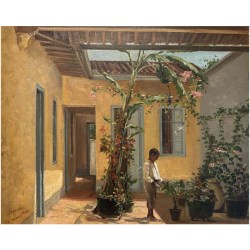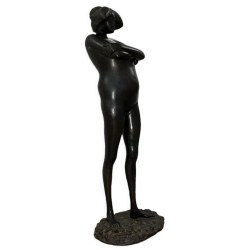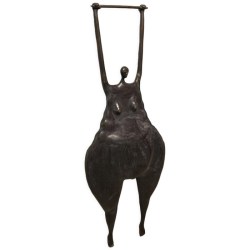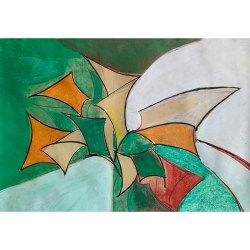Bio
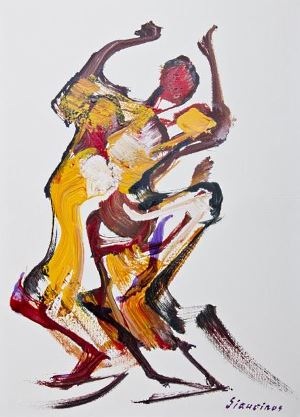 (Chihuahua, 1898 - Cuernavaca, 1974) Mexican painter, maximum figure, along with Diego Rivera and Jose Clemente Orozco, the Mexican muralist. Tax of expressionist aesthetics and declamatory rhetoric that demanded his political radicalism, his paintings combined the Mexican folk tradition with the concerns of European surrealism and expressionism.
(Chihuahua, 1898 - Cuernavaca, 1974) Mexican painter, maximum figure, along with Diego Rivera and Jose Clemente Orozco, the Mexican muralist. Tax of expressionist aesthetics and declamatory rhetoric that demanded his political radicalism, his paintings combined the Mexican folk tradition with the concerns of European surrealism and expressionism.
In 1914, barely sixteen, he enlisted in the Constitutionalist army to fight for the Revolution, an experience that led him to discover "the toiling masses, the workers, peasants, artisans and indigenous ... (especially) the enormous cultural traditions of our country, particularly as regards the extraordinary pre-Columbian civilizations. "
Self-portrait of David Alfaro Siqueiros
But if important was the influence of this finding key to their training years, was no less the imprint left in the three years he spent in Europe, to where started in 1919. The sum of these experiences determined his thinking alike artistic, which crystallized in the manifesto published in Barcelona in American Life magazine in May 1921, coinciding with the first orders of Vasconcelos.
But soon their relationship with the government deteriorated. His affiliation with the Communist Party of Mexico, its decisive role in the founding of the Union of artists and their newspaper (El Machete), together with the growing opposition to the official policy manifested through their articles, made stop receiving orders to From 1924 and, the following year, he decided to devote himself to political activities.
Siqueiros would resume his career in the thirties, but it was the ideological militancy which determined the course of his life. In 1930, after spending several months in prison for his participation in the demonstration on May 1, Siqueiros was sent into exile in Taxco. In 1936 he returned to fight, this time in the Spanish civil war, by the republican army. From 1940 to 1944 he was exiled in Chile for his involvement in the assassination of Trotsky in 1960 and was imprisoned again accused of promoting "social dissolution." When he left prison, four years later, he brought the ideas of what would be his last work: March of Humanity in Latin America to the cosmos.
For Siqueiros revolutionary socialism and modern technology were closely related concepts. He was convinced that the revolutionary nature of art depended not only the content of your images, but the creation of an aesthetic and technological equivalent in line with the contents. All his artistic life was chaired by the desire to create an experimental and innovative mural.
Detail Portrait of middle class Siqueiros
Siqueiros adapted his compositions to what he called the "dynamic architecture" based on the construction of compositions polyangular perspective. To do this carefully studied the possible paths of future viewers in places that would house its murals and well defined focal points of the composition. Siqueiros came to use a film camera to reproduce the vision of a viewer in motion more effectively and adjust the composition of that dynamic look.
His desire to achieve matching between the pictorial contemporary techniques and technology led him to create in 1936 an experimental workshop in New York. The practical workshop sought to integrate architecture, painting and sculpture with the methods and materials offered by the industry. There he experienced from what Siqueiros called "the pictorial accident", that is, the practice of improvisation using techniques such as dripping paint with sand and textures. The drippings and splashes dropped on the canvas, which later would become emblematic of American abstract expressionism, were one concocted in practice Siqueiros's workshop, attended by Jackson Pollock and other young people who were to form the first generation of American artists own language.
The mural at the headquarters of the Mexican Electricians Union (1939-1940, Mexico City) under the title Portrait of the bourgeoisie, collected after learning from investigations conducted throughout the entire thirties and is a of the most significant works of the twentieth century murals. Siqueiros mural chosen for the main staircase of the building.
The first phase of the project, for which he had a team of helpers which contained such significant artists as Josep Renau, consisted of an analysis of architectural space. The aim was to adjust the composition so that the three walls and ceiling will be integrated into a continuous paint surface. Siqueiros to create a dynamic and continuous visual field, in line with the viewer to go up or down the stairs, was as important as the subject represented.


